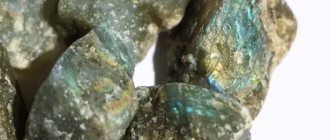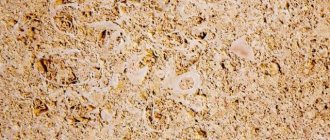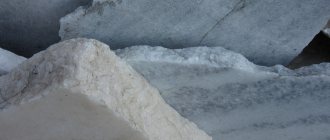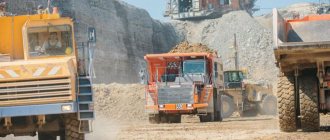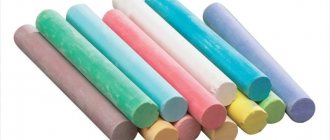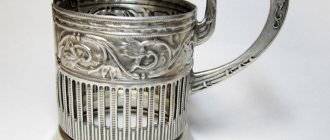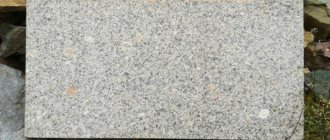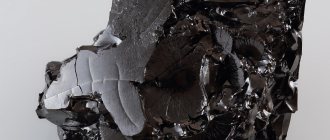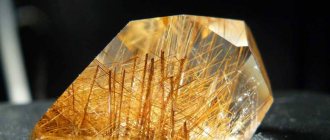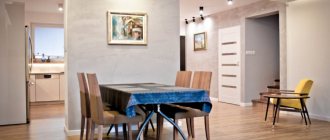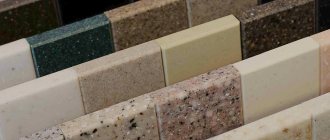Travertine is a limestone rock that is mostly composed of calcium carbonate. In its structure, travertine is a fine-grained rock, which is characterized by fragility and homogeneity.
Travertine is porous, it has low density and low hardness.
If we talk about colors, travertine can be light - white, pale yellow, light gray, or dark, for example, brown or brown.
Travertine contains not only calcium carbonate, but also many organic inclusions, such as shells, grains of sand, and the remains of animal skeletons. The density of the material depends on the number of such inclusions - the more organic residues it contains, the stronger the travertine.
Travertine is also called calcareous tuff. This material has been known for a long time. It was used back in the 1st century BC.
Travertine should not be confused with limestone, although they are very similar in appearance. The difference lies in the structure of the rock - pouf has a porous structure, and limestone has a dense structure. Travertine lends itself well to processing, this largely determines its widespread use in construction and interior decoration.
What is travertine
The travertine rock is a calcareous variety of tuff of sedimentary origin.
It is formed as a result of the precipitation of carbonate in water saturated with carbon dioxide.
The texture of the rock depends on the state of the water: the calmer it is, the denser the stone. The most spongy specimens are created by seething streams.
Stalactites and stalagmites in caves with underground water are also types of travertine.
Unlike many other rocks, travertine is formed continuously: the lower levels are compacted with new layers.
Formation and extraction of material
The stone is formed from carbonated water sources during the precipitation of calcium carbonate contained in them. In this case, carbon dioxide is released from the water. In caves where underground water flows, the rock forms stalactites - growths hanging from the ceiling, and stalagmites - sinter formations growing from the bottom.
Industrial deposits:
- Kyrgyz;
- Tajikistan;
- Armenian;
- Azerbaijani;
- German;
- Italian.
Kyrgyz travertine is valued for its greatest strength. Iran supplies the breed in yellow and red shades. In Uzbekistan, a mineral with the lowest organic content is mined.
Russian deposits are located in the Leningrad region near Pyatigorsk and Kamchatka.
Extraction is carried out in several ways:
- the most expensive is cutting out pieces from a solid mass, with minimal losses;
- explosive method - many pieces unsuitable for construction remain;
- splitting a solid mass by pumping air under pressure into cut channels - you cannot control the size of the pieces.
Further processing is carried out during construction - the pieces are brought to the required size and polished.
There is a locality called Pamukkale in Turkey. There, travertine deposits on the mountain slopes are a protected natural monument, a UNESCO World Heritage Site.
To watch a video about the extraction and processing of stone at the factory:
What does it look like
The description of the stone includes the following characteristics:
- Rough porous, not particularly heavy or dense agglomerates.
- Unevenly colored, streaks and patterns form what is called “harmony of chaos.”
- The shades are mostly beige, but there are gray, sand, even brown, black and red. The color depends on the conditions in which the rock was formed and the impurities in its composition.
The elite is considered a rare pure white stone. And black and brown are the most durable and wear-resistant.
However, the shade of the extracted raw materials may change: metal inclusions oxidize in air. The gray stone turns black, the beige stone looks dark sand.
Subtleties of choosing tiles
Choosing travertine is not as simple as it might seem. It’s not enough to decide on the size of the tile and its shade. It is also necessary to take into account a number of the following criteria:
Filling of caverns (pores)
It is better to purchase samples with factory-filled cavities. For filling, special opaque or two-component adhesive fillers are used.
In general, there is no need to be afraid of a reasonable number of cavities, especially when it comes to finishing dry substrates. They give an aged look.
Combination of density, crystallization, porosity and brittleness
It is these indicators that determine the final cost of the product. As noted earlier, the highest quality products are those with a structure close to marble. They are denser and less porous (with fewer cavities). The more pores, the higher the fragility.
Processing method (surface type)
Polished tiles are the most waterproof and versatile. The same can be said for semi-polished ones. The remaining views, so to speak, are not for everyone due to the presence of roughness and relief.
Where is it used?
The main areas of application of travertine are construction and decoration.
Interior
The breed is used to decorate interiors in classical or Roman styles:
- Mosaic tiles are laid on walls, floors, fireplaces, arches, window and doorways.
- For living rooms and hallways, soft beige Turkish raw materials are used.
- Bright decorative Iranian travertine is organic in the kitchen, loggia, terrace, and bathroom.
Travertine in the bathroom interior
Durable artificial material is suitable for the floor, mantelpiece, and countertop. It is durable, moisture resistant, non-slip.
Natural stone should be used in the interior; artificial stone is suitable for urban exteriors.
Exterior
Natural travertine is not often used for facades, cladding walls of buildings, paths, flower beds, and outdoor pools.
The influence of the microclimate of megacities is especially unfavorable for it: stone quickly becomes dirty and absorbs exhaust from enterprises and cars.
But outside the city, this is a two-in-one option: noble beauty at a reasonable price.
Decor
Travertine is used to make mantelpieces, countertops, large plastic items, and other products for utilitarian and aesthetic purposes.
The walls are decorated with travertine plaster. This finish is environmentally friendly, durable, invulnerable to fire, water, chips, and durable. Simply beautiful.
Other areas
Travertine chips or powder are used by farmers for liming acidic soils.
What color is most often used in the interior?
Most often in the interior space you can find stone tiles with a pleasant pale yellow tint. Material of a different color has a denser structure and higher cost.
The surface of the yellow tile contains a large number of decorative veins. They add luxury to the interior, a feeling of warmth and tranquility. The texture of this type needs special processing for me. During the production stages, light types leave them in their original form. The surface of each product cannot be sanded.
What adds decorativeness to a product? This list includes:
- Sawing is done across the veins. This model is called Ven Cut. Its texture has pronounced stripes. Externally, such products have some resemblance to natural wood. Such distinctive features make the model in demand among many designers;
- Sawing across the veins gives a patterned texture with an uneven pattern. Such decor models are used to decorate walls in the bathroom and toilet. Stone made in this way is distinguished by its unpretentiousness, but has some disadvantages. Rock with such a pattern is quickly destroyed when exposed to an acidic environment.
How to care
The Colosseum is already two thousand years old, St. Peter's Basilica is several centuries old. But then there was no gasoline, chemicals or similar destructive factors on Earth.
Today, travertine products need to be carefully looked after:
- To remove dirt and stains, the use of abrasives, hard brushes, and household chemicals is prohibited.
- Even regular vinegar doesn't work.
- Remove dirt with a soft cloth and warm soapy water. Wipe dry immediately.
Facades and other types of exterior require hermetically sealed protection.
The main advantages of Arcobaleno countertops:
- high impact resistance
- high quality and environmentally friendly materials
- mechanical resistance
- Resistant to ink, coffee and food acids
- the surface of the countertops does not fade in the sun and is not subject to the aggressive effects of detergents and household chemicals
- reliable protection of the surface from moisture with a high-quality sealing layer, the tabletop will not swell from contact with water
Important:
- At both ends of the tabletop there is a technological edge of 10-20 mm, which must be sawed off
- In our production we can make cuts according to your dimensions, figured cuts, cuts for a stove or sink, as well as processing the ends of the table top with an edge in the color of the table top
Performance characteristics of chipboard countertops:
- AR+ coating (high-strength plastic)
- bright rich color
- resistant to cold and damp
- resistance to abrasion and scratches
- moisture resistance and durability
- easy to care for and heat resistant
- does not change color characteristics during its service life
- not exposed to food acids, household chemicals and coloring drinks
Chipboard countertops are the most common type of countertops. Thanks to its rich color range and low cost, it has long earned popularity in the kitchen furniture market.
The online store svoystroy.ru offers you kitchen countertops. Made on the basis of chipboard, covered with layered plastic on top, it is durable and shock-resistant, easy to care for and unpretentious in the choice of detergents. For a complete set, we offer furniture panels, skirting boards for tabletops and edging material, which are made in the same color. In the kitchen, the countertop serves not only as a table, but also as a cutting surface, which is constantly exposed to mechanical stress. The tabletop can be used as a desktop and as a window sill. Laminated chipboard countertops are the most affordable compared to countertops made of natural or artificial stone. You can order moisture-resistant countertops for the kitchen of unsurpassed quality in our online store svoystroy.ru.
Artificial travertine
Travertine is not counterfeited, but the production of artificial stone has begun. It consists of travertine chips soldered with resins, silicate mixture, glue, cement, and other astringent substances.
Such samples are considered to be imitation conditionally, since their composition is natural.
Endowed with advantages over natural stone:
- The structure is monolithic, therefore more durable.
- Resistant to aggressive household chemicals and natural disasters.
- Can be painted in different colors.
It is important as a source in the manufacture of wall and floor tiles for especially visited places (supermarkets, airports, concert halls).
Mineral cost
The cost of unprocessed rock is from 100 rubles per hundredweight. The tiles will cost 500-3000 rubles per square meter. Plaster costs 200-1500 for 5 liters. Products are usually made to order, so the price is negotiable.
Travertine is a stone for construction and interior design. It has a pleasant color and textured surface. Resistant to temperature changes, humidity, fire resistant. It is used for external and internal decoration of premises.
Have you used travertine to decorate your home? Share your stories in the comments.
How to distinguish
You can distinguish natural travertine visually:
- The structure is layered, spongy.
- The pattern is harmonious.
- Untreated rock is easy to scratch or chip off.
The artificial material has a monolithic structure and no pattern. It is difficult to damage it.
Externally, natural stone looks almost like limestone. Limestone is easily distinguished by its dense texture.
